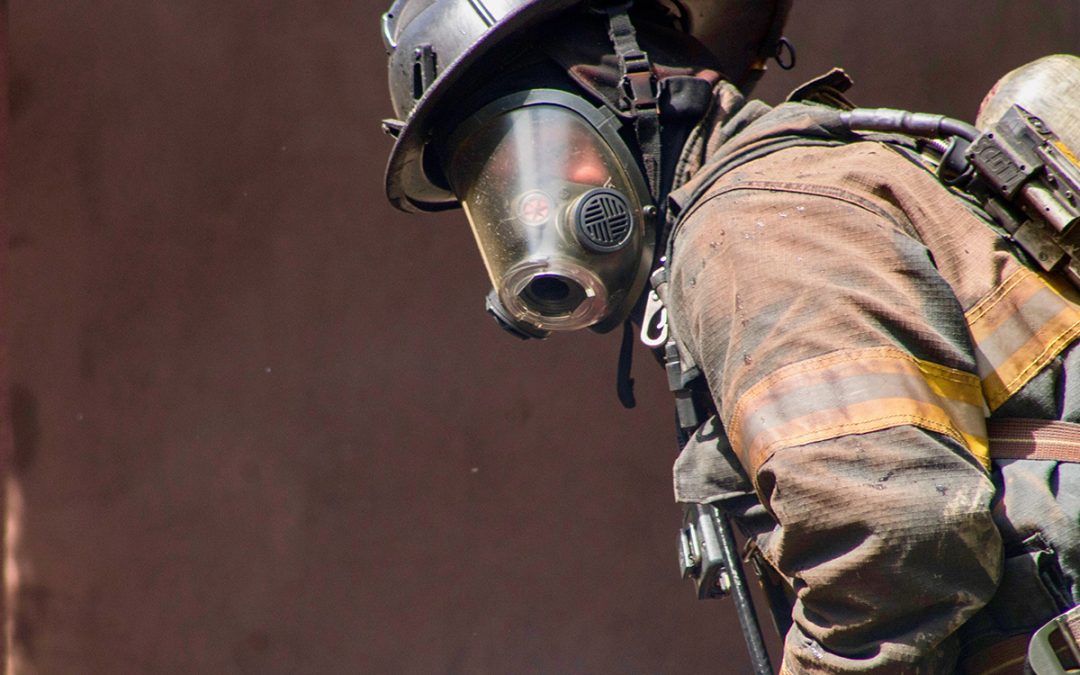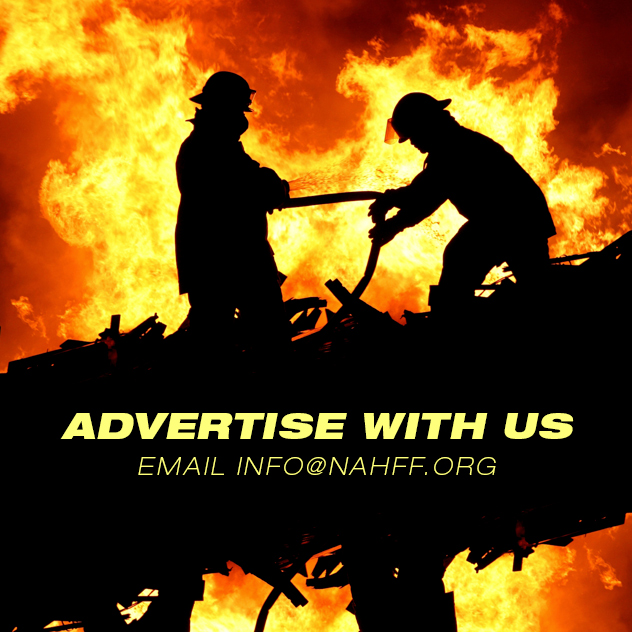President’s Report
Over the past few months, we at the NAHFF have been busy. First, we worked on our Strategic Business Plan. Second, we worked with SAM.Gov to get approval and acceptance to apply for federal grants. Third, our website and membership database were updated to help our members find more resources. Fourth, we upgraded our social media presence and we worked with the Assistance to Firefighters Grants to submit three grants. Lastly, we have been working with the Biden administration and the Congressional Hispanic Caucus to gain support for our projects.
The work we have done as of this date will help our organization grow and become stronger in the future. As an example, FEMA will soon announce a new FEMA administrator, because of our work, we will be in the front seat providing advice and guidance on how to best serve our communities.
Now that the easy parts are complete, we are going to start working on gaining support from each of the Congressman and Senators on how they can help us reach more constituents and communities. Once that is complete, we will work closely with the next United States Fire Administrator on the future of the fire service.
In closing, I want to thank you for your challenging work and commitment to the Hispanic Community. Without you, families would have been left out of the many programs available to everyone. So, once again, thank you for your commitment and dedication to helping our communities grow and be more viable.
Important Meeting!!!
The National Membership Zoom Meeting is scheduled for Tuesday, April 20, 2021 at 6:30 PM – 8:00 PM CST.
Agenda
- Board of Directors Introductions
- President Report
- Strategic Plan Overview
- Chapter/Affiliates Reports
- Adjournment
Zoom Meeting Details
Topic: National Meeting
Link: Join Zoom Meeting
Meeting ID: 701 425 9940
Passcode: 8VbhVY
Dial By Your Location
+1 346 248 7799 US (Houston)
+1 253 215 8782 US (Tacoma)
+1 669 900 9128 US (San Jose)
+1 312 626 6799 US (Chicago)
+1 646 558 8656 US (New York)
+1 301 715 8592 US (Washington DC)
Meeting ID: 701 425 9940
Passcode: 234761
Find your local number: https://us02web.zoom.us/u/kdhdCS5o3O
Diversity: What Does It Mean?
Recently, I was reading an article on diversity and learned that my definition of diversity didn’t coincide with others’ definitions. Historically speaking, diversity was defined in 1994 by a researcher named Cox. In 1995 McGrath created a new definition, and then subsequently, others developed theirs.
One reason for so many definitions was that the author used different criteria to establish a purpose in each research document. For example, Cox studied specific cultural habits, McGrath used individual body features, and some authors used viewpoints that cause behavioral changes in other groups.
Additionally, in specific organizations, such as technology, finance, professional sports, the judicial system, and medicine, diversity was not established by race, gender, or ethnicity but by using nonvisible dimensions that included IQ, cognitive abilities, education, leadership abilities, and occupation. So, what does it mean to the fire service? Four thoughts. First, diversity has no set definition. Therefore, when creating a purpose, each organization should develop a series of criteria through a series of questions that defines the organization. For example, here are four questions that I used to describe diversity in my past department:
Does your department provide for a global thinking approach to problem-solving?
Do your employees have a more substantial commitment to the organization?
Do your employees have a stronger desire to increase organizational performance?
Do your employees have a stronger desire to improve community participation?
My definition based on the criteria:
“Diversity is an evolving process for recognizing diverse cultures and ethnicities within our communities to create a global thinking approach to problem-solving, SO WE CAN increase organizational performance AND provide better community participation through the enhanced city, departmental and employee awareness.”
Second, we must be aware that although we advocate for diversity in the fire service, in the world of data and spreadsheets, we know with 100 percent certainty that our organizations do not resonate with what we state. A recent report entitled “Characteristics of Individuals and Employment Among First Responders,” published August 6, 2015, by the Department of Labor, says that 19 out of 20 firefighters are men, and this is just one demographic.
Third, research tells us that when a department is diverse, the study shows that these departments promote community engagement, global thinking, and cooperation for the organization and the community resulting in everyone having one variable in common—Trust.
Fourth, we know that diversity provides increased employee engagement, increased awareness of our surroundings, successful adjustments in our communities, and overall individual and organizational growth. As an example, in a recent study by Ward on workplace diversity, a survey asked if there are any benefits to having a diverse workplace; 95% of the respondents said yes to the following services:
- Learning and growing from each other
- Diverse ways of doing things
- Benefits to the clients
- Increased ability to achieve
- Exposure to diverse cultures and beliefs, building tolerance and understanding.
- Increased knowledge
- Reflecting society
Also, Ward’s study concluded that workers’ findings support recommendations to develop a definition for diversity in the workplace.
In Summary, when starting to define diversity in your department, consider the demographics of your community and organization and keep in mind that although we would like to have set parameters for diversity, none apply to everyone. In essence, as a chief officer, you need to establish the criteria you want your department to follow.
“Don’t Train Your Firefighters to Be Leaders.”
Last year, before the pandemic, I attended a conference in Washington DC. Over 2500 fire service leaders and Congress members and senators shared information about the fire service. The focus for all these leaders was how to make communities better. The sharing of information took place in the hallways, at Capitol Hill, and during dinner. The event’s highlight was when we heard about the award winners’ accomplishments and how their commitment made a difference in the fire service.
I share this story with you because no fire service training course teaches what I and others experienced during this event. “Don’t train your firefighters to be leaders” is not about stopping the learning process but about understanding that training is about teaching someone to do a task, such as donning an SCBA or pulling the hose.
Teaching is about showing how actions lead to consequences and how those consequences can impact budgets, morale, and communities.
During my 38-year career in the fire service, I was fortunate enough to have leaders in my department mentor me and teach me how to be a leader. They taught me how leadership theories and applications work. They also taught me that even though I knew how to lead, they told me that knowing how and when to implement those theories DOES NOT come from the course, but from others showing you the way.
Mentoring in the workplace has value, and mentoring is beneficial to both the individual and the organization. The value of mentoring comes from the three benefits the employee and the employer experience. The first is about recognizing that mentoring is about making the organization and the individual successful. Second, believing that mentoring is about building the individual to make the organization better and stronger. Third, thinking that mentoring is not about one person being the teacher and one the student, but both are students and teachers. Moreover, it’s about the relationship whereby the mentor provides the individual with psychological support and career development.
Let us take psychosocial support. During this process, the mentor introduces the mentee to other leaders and allows them to attend meetings, conferences, and events. Introducing the individual to different opportunities teaches the individual the organization’s ways. It passes on experiences that help the individual understand how decisions evolve into line-item budgets, policies, and SOP/OPG’s. In other words, it is providing the individual with exposure to the processes of the department, government, and communities. Career development is about giving the individual small controlled projects to learn how the individual deciphers a problem and develops a solution, such as updating a policy.
As a researcher, I have known that there is an assumption in the fire service that learning comes from gaining experience. The more knowledge you have, the better you are as a firefighter or as a chief officer. To a degree, this statement has value and truth, but let’s not forget what research states. People learn by one of three methods: (a) trial and error, (b) observation of others and, (c) education, and the three-give rise to facilitation, guidance, and input.
When a person is mentored or taught to be a leader, the mentor functions as a learning facilitator. The mentor and individual provide for the development of critical reflection and self-directed learning. In essence, the individual begins to reflect on what they have learned, forcing them to update the information they lack. Second, as the mentor provides information, both the mentor and the individual understand each other’s limitations. Both agree on the level and depth of information that a person can learn. Finally, as the mentor facilitates learning, the mentor develops a TRUST level with the individual and, as a result, either expands or limits the information they have available about the department or processes.
Another component why we should NOT Train Firefighters to Be Leaders comes from not understanding what relevant information the person needs to succeed in the fire service. Career mobility is dependent on two factors, education and training. With education, it is about the level of education the person possesses that provides mobility. Training is about the training the organization offers the individual that provides mobility, and it is this combination that is deciding factor in career mobility.
Historically speaking, schools and training centers offer leadership courses as a requirement to advance into the next level of the organizational chart. These programs have value and will result in growth and advancement. Yet, research on career mobility also contends that when an individual takes courses without knowing if those courses are considered relevant to the position, it causes the individual to be considered overeducated. In retrospect, when the individual fails to take the needed classes, they then become undereducated. Concluding that taking courses for the sake of lifting the resume is not necessarily a good idea, especially if the organization does not find them relevant to the position the individual seeks. As a result, the organization can consider you overeducated or undereducated for a job.
Finally, Don’t Train Your Firefighters to Be Leaders is about having the mentor teach the individual how to reach their goals. We have learned from research and experience that the rate of ascension for an individual depends on the mentor creating a career map the individual can follow. This map includes teaching the individual what level of education and training they must attain and teaching them the position’s requirements. In essence, what the mentor is doing is aligning the individual with the goals of the organization, providing the individual with projects (career development) to help meet those goals, and introducing them to senior members of the department (psychosocial development) so these senior members can take notice of the individual.
In Summary, “Don’t Train Your Firefighters to Be Leaders” is not about changing the basic assumption that we should stop offering leadership courses but about thinking about how we, as officers, can build a relationship that invests time and energy to make an individual successful.
Additionally, it is about creating identifications where the individual can see the mentor’s past footprints and how they become a pathway for success.



